AN100 Final Exam Review PDF

| Title | AN100 Final Exam Review |
|---|---|
| Author | Anonymous User |
| Course | Cultures Today |
| Institution | Wilfrid Laurier University |
| Pages | 21 |
| File Size | 371.1 KB |
| File Type | |
| Total Downloads | 46 |
| Total Views | 517 |
Summary
I did the exam and made little comments for things like whether or not something is on the exam and how much it might be worth! (if I make a comment on something dont assume its because its not on the exam, still study everything unless I note specifically its not on the exam!) VERY HARD EXAM My fri...
Description
I did the exam and i've made little comments for things like whether or not something is on the exam and how much it might be worth! (if I don't make a comment on something dont assume its because its not on the exam, still study everything unless I note specifically its not on the exam!) VERY HARD EXAM My friend just wrote the exam and there’s a lot of things on the exam that’s not on here, just a heads up! Yeah I wrote it the review is missing alot. But it’s pretty easy
Thank you so much!!! -- no problem :)
Do the marks get posted right away?? No they don't ! AN100 Final Exam Review Key Terms and Concepts: The AAA Code of Ethics ● Do no harm: direct or indirect harm (dignity, body and material integrity Findings should not harm people one studies ● Link research to promote well-being (advocacy, social critique) or ‘disinterested observer’? ● Be open and honest regarding research ● Informed consent from informants (children cannot give informed consent, so must not be interviewed) ● Falsifying or fabricating evidence is unethical ● Inform people of research goals and reason for presence in the community ● Maintain anonymity (or give voice) give credit
● Weigh competing obligations and responsibilities (to funding organizations, universities, government, people studied) ● h ● Make results accessible to people studied ● Protect and preserve records for use by community studied ● Maintain ethical and professional relationships with people Essentialism ● Act of creating generalizations of stereotypes about the behaviour or culture of a group of people ● People are depicted in ways that tend to homogenize and stereotype them ● E.g. term “primitive” - colonial term for “non westerners” ● E.g. Dressing up as a culture for Halloween (Native, Mexican) Ritual ● Social behaviours specific to given cultures ● Rituals are actions with intentional symbolic meaning undertaken for a specific cultural purpose, such as rite of passage from childhood to adulthood and may reinforce broader community social bonds Rite of Passage ● Rituals that accompany or signify a change in status ex. Boys to men Ritual transvestism ● Wearing of a dress of the opposite gender during a ritual Syncretization ● is the combining of different beliefs, while blending practices of various schools of thought.
Kinship—relations and systems Consanguinity- blood relationship Fictive Kinship - not blood related but you treat them as if they are Affinity- through marriage Common Law - two people cohabit in a conjugal way Polygamy - a person is permitted to have more than one spouse Polygyny: a man having multiple wives Polyandry: Women having multiple husbands Fraternal Polyandry: Brothers share the same wife Polyamory - multiple informal partnerships of single or married Sororate: Man Marries deceased wife’s sister: continues the line Levirate: Man marries deceased brother's wife, woman can stay close to children.
Marriage rules: Exogamy – marriage outside a specified category (Clan, Lineage, Village) Ex. Trobriands Endogamy - Marriage within a specified category (Class, Caste, ethnicity or lineage) Middle Eastern Societies – Parallel cousins can marry
Marriage payments: -
Bride Service or Groom Service: Groom works for bride’s family (Dobe ‘hoansi)
-
Bride wealth: Transfer of wealth objects from groom family to bride’s family Payment for her reproductive potential, 4z\labour, sexual access
-
Dowry: transfer of wealth objects from bride’s parents to bride or groom or his family (India, China) - As bride’s inheritance, her contributions to groom or his family (illegal in India)
Lineage: Lineage: Blood relatives who trace descent from a known ancestor/ancestress. Maybe matrilineal or patrilineal. Bilateral Descent: traced via parents, groups formed on the basis of descent. Regulates membership, property, and marriage. Nuclear Family: Two generations – parents and their unmarried children (70% in Canada) Extended family: Three generations living together. Joint Family: Brothers and wives (or sisters and their husbands) along with their children living together (joint land is the basis for this household) Blended Family: Created when previously divorced marry, bringing with them children.
Social Identity: Social identity theory compares how behavior and identity vary situationally based on people's fluid concepts of themselves as either individuals or as members of groups Learned and passed down (enculturation) Defined by socially recognized status and roles Textbook definition: The view that people have their own and others positions in society. These learned personal and social affiliations may include gender, sexuality, race, class, nationalism, and ethnicity. Individuals seek confirmation from others that they occupy the positions on the social landscape that they claim to occupy.
Enculturation: ● The process through which individuals learn an identity. It can encompass parental socialization, the influence of peers, the mass media, government, and other forces. ● Learned and passed down Nature vs. nurture -Nature comes naturally; nurture is learned -a long-standing scholarly debate concerning whether or not human behaviours and identities are the result of nature (biological and genetic factors) or nurture (learned and cultural factors) Sociocentric/egocentric ● Sociocentric: A context-dependent view of self. The self exists as an entity only within the concrete situations or roles occupied by the person. E.g., Japan societies ● Egocentric: A view of the self that defines each person as a replica of all humanity, as the location of motivations and drives, and as capable of acting independently from others. E.g., North American societies Holistic selves: Page 168 “The person cannot be conceived as existing separately from society or apart form his or her cultural beliefs” Imagined Community: ● Have to construct an identity in a multicultural society ● P. 164: The construction of a sense of national identity can be created in the absence of face-to-face interactions through mass media ● E.g. I don’t know every Canadian in every part of Canada – but we all share a ‘sense of being Canadian’ ● Nationalism is culturally constructed Commodities & gift giving: Commodities are objects of value that are sold and bought in the market for a price (money) ○ Mass produced, impersonal, alienated from producer, little history and independent from sellers
● Gifts are items that are appropriated, possessed, personalized objects defining buyer's identity ○
Inalienable – bound to people after presentation
James carrier in “gifts and commodities” relates the rise of commodities (meaningless objects passed through the market and exchanged for cash (exchange of values) Reciprocity: ● Principles of Reciprocity: gift giving involves reciprocity. The idea is that the exchange of gifts creates a feeling of obligation, in that the gifts must be repaid ● Example: Kula ring (see page 175) / Potlatch (see page 176) ● 3 stages - you give something, you receive something, you return something Kinship: Refers to the anthropological, cross-cultural study of family composition, marriage, and descent patterns New kinship: Donor conceived family networks: based on shared genes between donor siblings and their respective kin Descent principles: Unilineal Descent: Privileges only 1 line Patrilineal: male line e.g., Taiwanese Matrilineal: Female line e.g., Trobriands Bilateral descent: Traced via both parents - Euro American and ju hoansi Lineage: Blood relative who trace descent from known ancestor/ancestress. Maybe patrilineal or matrilineal ● Clan: Larger group with many lineage ● Members trace descent from an ancestor or ancestress but the exact relationship is not known ● ● ● ● ●
Class: A status group within a hierarchy (high, middle, low) based on wealth, occupation and income. It is achieved unlike Caste or Race but ascribed if born into one. Caste system: a form of social stratification and identity where individuals are assigned at birth to the ranked social and occupational groups of their parents Habitus (Pierre Bourdieu):
Habits and dispositions created by our class position o I nternalization via socialization, the behaviors, norms, tastes, appropriate to our class (cultural capital) o H ow to act, dress, think, buy (lifestyles, tastes, education) o C reate particular dispositions (qualities, character)
Stratification: organization of society into social divisions Sex/gender, class, caste, ethnicity, race Theories of Stratification: Functionalist: -
Inequality is necessary to maintain complex societies due to specialization of tasks
Motivates and rewards those based on qualifications Criticism: Doesn’t provide opportunity because it’s not a level playing field Conflict Theory: Conflicts are inevitable between privileged classes and those who struggle for inequality “Anyone can make it” ideology acts as “false consciousness” created by ruling classes Criticism: not everyone has the same passions or capabilities Poverty: women are the poorest of the poor. Likelihood of poverty is greater among indigenous communities, Dalits, new immigrants, immigrant women Structural violence: Refers to the systematic ways in which social structures or social institutions harm or otherwise disadvantage local individuals. Structured violence is often invisible and lacking one specific person who can be (or will) be held responsible Paul Farmer: Found in Liberation theology a means for pragmatic solutions to the problems of the poor – pragmatic solidarity o Preferential treatment
o
Different from ‘hiding away of poverty’ by the wealthy
Race & racism and all its forms and concepts related to this (i.e., white privilege, new racism etc.) AAA on race: Race is a social construction, classification of races is selective and arbitrary Structural racism: embeddedness of racial beliefs within institutions (form of structural violence) Racialism: ethnocentric belief in the existence and ill treatment of ‘races’ New Racism: racial differences as insurmountable & immutable ‘cultural’, rather than biological differences e.g., identity soup kitchen campaign in Paris (p. 208) White Privilege: refers to the fact that, in many societies, “white” people have access to greater power, authority, and privileges than non-white people
Institutionalized racism
Critiques of the ‘White Privilege’ concept: -The term is a proxy for class and other privileges & distraction from deeper & underlying inequalities - It creates divisions within classes -Not all whites are privileged (intersectionality) -Minorities and non whites are no longer limited by prejudice -Some non-whites have same privileges
Sex & gender and all related terms-third gender etc.
Third Gender: A gender role given to someone who does not fit within strictly masculine or feminine gender roles in a given society Misogyny: prejudice & hatred of women. Sexual violence & domestic violence, sexual harassment Misandry: prejudice & hatred of men. Representation of men in social media as violent & evil, incompetent (breadwinner model) Masculinity/Femininity: -Attributes and qualities of being male or female -These attributes can have negative impacts on those who don’t ‘fit’ these stereotypes Hegemonic masculinity: “ideals and norms of masculinity which are privileged over others” privileging of the phallus (physical symbol) to demonstrate, power, dominance and debasement of women Feminization of labor: visibility of women in the labor force, but integrated in unequal terms Feminization of poverty: poverty affects more women than men Anne-Fausto Sterling identifies 5 sexes (there are more…):
Naturalizing discourse; naturalizing power
***anyone know what this is i cant find it*** ^ only note i have that brings up naturalizing discourses Legitimacy Supported by Naturalizing discourses Rooted as if in biology or nature -Shared bodily substance; blood, genes -Rather than history or culture (slavery)
-Made to appear eternal and unchanging -IQ (innate ability Vs cultural construct) “White take to drugs because they have no jobs; blacks take drugs so they have no jobs” Intelligence != Innate ability Intelligence = Cultural construct
Globalization: Intensification of worldwide social relations that link distant localities in such a way that local happenings are shaped by events occurring many miles away, and vice versa. Neoliberalism: An economic philosophy that argues for minimal government involvement in the economy and greatly accelerated economic growth. Well being, neoliberals argue, is best served by liberating individual entrepreneurs to operate in a framework of strong property rights, free markets, and free trade. Market Externality: Costs that are not included in the prices people pay, for example, health risks and environmental degradation Nation-state: Nation: Cultural Entity (language, religion, common heritage) State: Political Entity Nation-State: “political community that has clearly defined borders and centralized authority” (p. 226) Role of the Nation-State: -Imposes a common language -Ensure communication with other members Meech Lake Accord – an attempt to make non-English and non-French speakers marginal by their exclusion from this amendment -Cross-country transportation is provided
-A bureaucracy collects taxes and revenues -Law and Order National identity: Creating a National Culture (Values, language, etc.) Selling National goods Print capitalism (media) to create national consciousness -Education for consent (not via coercion) Creating the ‘other’ (immigrants, refugees, undocumented “aliens”, non-citizens) -Via Gatekeeping procedures Transnationalism: extending or going beyond national boundaries Diaspora: Population whose members are dispersed outside their homeland ○ Migrants, migration, immigration Multiculturalism: A canadian policy in which all hyphenated cultures, such as African-Canadian and French-Canadian, are described and celebrated as part of a “cultural mosaic.” Contrast with the “cultural melting pot” image that is used in the United States
Indigenism ● International, collaborative movement to protect the rights and livelihoods of indigenous populations (p. 241) ● Houaorani of Ecuador (240 and 241) confederation of Indigenous Nations of Ecuador fighting oil companies (Petro Canada etc) ○ Resisted and takeover, water prices, tourism, oil production ● Idle no more movement (Canada) ● Dakota Pipeline Resistance Hegemony, power, authority ● Power: ability to influence - coercion or persuasion (hegemony)
○ I.e, legitimate or illegitimate; autocratic VS democratic ● Authority: legitimate use of power; power inherent in the position (President or PM) Political anthropology: ● Study of Social and political power and their organization in different societies ● Conflict resolution between and different societies and groups ● The types of leadership Political organization refers to the… Means used by society to maintain order, regulate behaviour of members, and manage inter group relations. -
Involves: decision making, social control, dispute resolution Social control: Internal/cultural: Guilt via socialization and internalization of norms External: Coercion, laws, punishments Leadership type:
-
-
Bands: Un-centralized - Informal leader Tribes: Un-centralized - leader can be: village headman/big men/chiefs of independent descent groups (Ex. Trobriands) ● Big men: achieve their position ● Chief: inherit their position Chiefdoms: Centralized - chiefs of regional system States: Centralized - Elected President/Prime minister Centralized: Part of a larger authority Un-centralized: Smaller community that does not come under one authority / there is no higher authority
-
Forms of disputes settlement: Self-redress: legal right to settle among themselves or by 3rd party Negotiation: between party (ex. Two neighbors settle a dispute between them) Mediation: a third party can help but cannot impose decisions on disputants Adjudication: judge in a court of law who has the authority
Genocide: The attempt to exterminate a people Ethnocide: The attempt to destroy the culture of a people
CASE STUDIES Ethnographic Examples: **Can people fill these in please** Polyandry in Tibet (see Goldstein’s “Polyandry: When Brothers Take a Wife”): -Brothers marrying the same wife -The reading studies why the Tibet people choose Polyandry when they have the choice between all the other marriage forms (including monogamy) -A group of brothers marrying the same wife can easily preserve their family resources (no splitting of the family farm) -Young brothers do not join in on the marriage ceremony, however join the marriage when older -The eldest brother is dominant -They all share the wife sexually -Children do not get linked to one father as all the brothers as seen as the father -Women feel they will be better off economically with multiple brother husbands -Causes less family trouble -It is false that Tibetans practice infanticide (kill a child within a year of birth) therefore less women to marry -It is false that extremely harsh ecological factors play a role in marriage choice Marriage practices among the Fouta Djalloon (see Fioratta’s “Marriage and Adulthood in West Africa”) -Arranged marriage
-Focused on the Guinea Society -It is hard for them to stay married -The presidential candidate had posters saying “no wife” “no children” -Marrying meant you were an adult -Marriage can be lost through death or divorce -Marriage is hard for young men b/c of their lack of education they get less opportunities, therefore it is hard for them to provide money for their wife and children (if wife's family is unhappy with the husband's income they will take her back and marrying off to someone more suitable) Family life in traditional rural China -revolves around the patrilineal extended family household of a married couple, their married sons and daughters-in-law, and their grandchildren and unmarried daughters -family includes a long line of patrilineal ancestors -the identity of each male is defined by his relations to the dead as much as it is by his relations to the living -his social worth and destiny are but reflections of the actions of his ancestors -chinese express a marked preference for male children, to maintain the patrilineal descent group AIDS and Ju/’hoansi life in remote areas vs. Ju/’hoansi life in Tsumkwe: Child-naming among the Umbundu in Angola -
Child named after an ancestor The Trobriand Islanders - small communities (4 clans total) - matrilineal kinship - chief = eldest male of highest ranking matrilineage (dala) -dalas rooted in brother/sister relationships, relationship is very important, center of their mythology - believe in reincarnation
- courtship starts very early - Must observe exogamy - males are seen as having no role in conception of children Sexual relations and conception: The kula ring : ● A well know example of gift giving in anthropological literature is the kula ring ● Trobrianders travel from island to island to visit and trade ● Each man has trading partners on the island he visits and these partnerships are signalled with gifts of red shells necklaces or white shell armbands ● Men who receive these passes them along to another trading partner Western consumerism, reciprocity and gift-giving (see James Carrier) ● James argues that since the 16th and 17th centuries the production and distribution of goods has become impersonal and that the spread of industrial and commercial capitalism, as meant the spread of alienated objects and relations ● Commodities were personalized in various ways- in earlier times ● The relationship between the producer and the seller of goods was a personal one between friends and relatives ; the buyer knew who made and sold the object...
Similar Free PDFs

AN100 Final Exam Review
- 21 Pages

AN100 Final Exam Layout orgainzed
- 38 Pages

Chem Final Exam Review
- 12 Pages

Final Exam - Review notes
- 92 Pages

Bio Final Exam Review
- 2 Pages

Final EXAM Review booklet
- 5 Pages
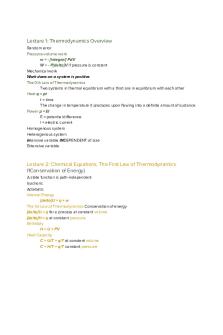
CHEM303 final exam review
- 4 Pages

Psychology Final Exam - Review
- 13 Pages
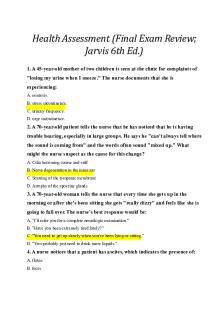
Jarvis Final Exam Review
- 12 Pages
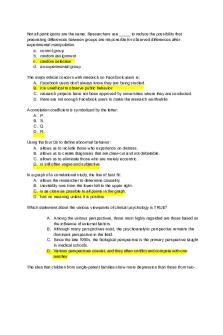
Final exam review
- 96 Pages
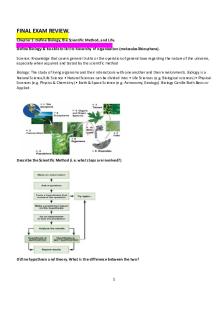
Final Exam Review
- 48 Pages
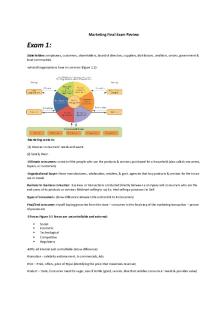
Marketing Final Exam Review
- 15 Pages
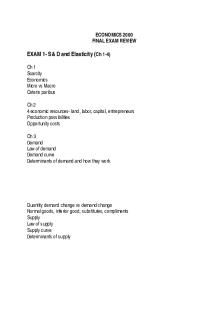
Final exam review
- 8 Pages
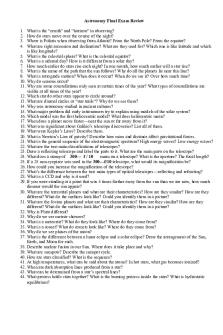
Astronomy Final Exam Review
- 2 Pages
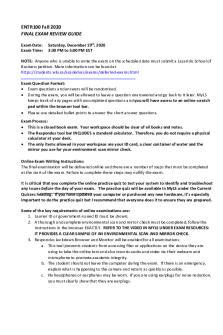
Final Exam Review Guide
- 4 Pages

Final exam review flsp4420
- 5 Pages
Popular Institutions
- Tinajero National High School - Annex
- Politeknik Caltex Riau
- Yokohama City University
- SGT University
- University of Al-Qadisiyah
- Divine Word College of Vigan
- Techniek College Rotterdam
- Universidade de Santiago
- Universiti Teknologi MARA Cawangan Johor Kampus Pasir Gudang
- Poltekkes Kemenkes Yogyakarta
- Baguio City National High School
- Colegio san marcos
- preparatoria uno
- Centro de Bachillerato Tecnológico Industrial y de Servicios No. 107
- Dalian Maritime University
- Quang Trung Secondary School
- Colegio Tecnológico en Informática
- Corporación Regional de Educación Superior
- Grupo CEDVA
- Dar Al Uloom University
- Centro de Estudios Preuniversitarios de la Universidad Nacional de Ingeniería
- 上智大学
- Aakash International School, Nuna Majara
- San Felipe Neri Catholic School
- Kang Chiao International School - New Taipei City
- Misamis Occidental National High School
- Institución Educativa Escuela Normal Juan Ladrilleros
- Kolehiyo ng Pantukan
- Batanes State College
- Instituto Continental
- Sekolah Menengah Kejuruan Kesehatan Kaltara (Tarakan)
- Colegio de La Inmaculada Concepcion - Cebu